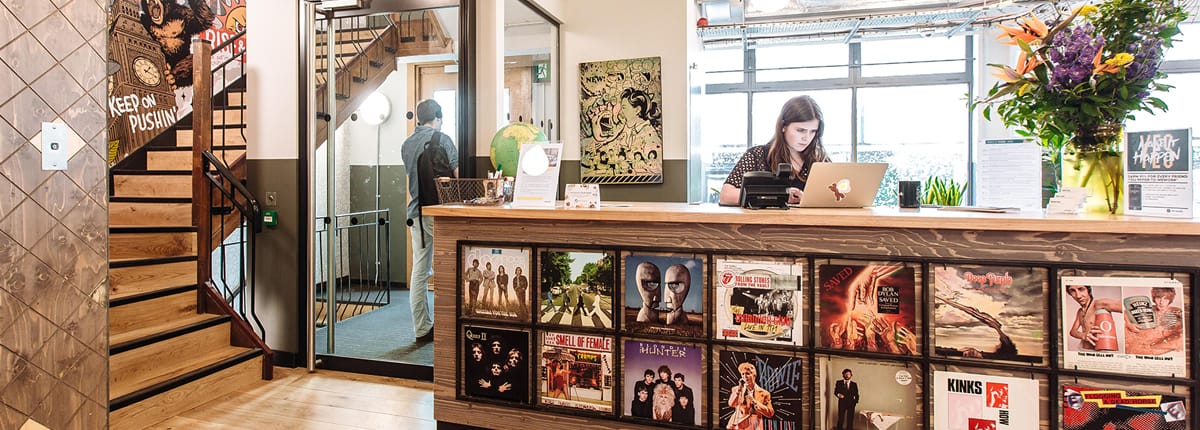
What is Activity Based Working
Businesses have already begun to abandon the uninspiring idea of filling offices with cubicles, but in the future, will we see workers abandon the idea of a physical space altogether?
*Data from Egi.co.uk between 4th Jan to 31st Mar 2016 **Phase 1 (2011 -2013)
Need Help Finding a Serviced Office in London?
If you are looking for office space in London, we can show you a variety of flexible workspaces throughout the city of London. To find out more about the areas that OfficeBroker.io covers in London, check out our London Postcode Guide or our Coworking Guide.
The amount of space you need for technology is also likely to change in the future, particularly if you’re thinking about moving your business into the cloud or relocating your data centre offsite. By considering how your business will look in three, five or ten years, you can choose an office space that is flexible enough to grow and change as your business does.
*Data from Egi.co.uk between 4th Jan to 31st Mar 2016 **Phase 1 (2011 -2013)
Need Help Finding a Serviced Office in London?
If you are looking for office space in London, we can show you a variety of flexible workspaces throughout the city of London. To find out more about the areas that OfficeBroker.io covers in London, check out our London Postcode Guide or our Coworking Guide.
[/vc_column_text][/vc_column][/vc_row]
In February 2016, a report came to light from the British Council for Offices (BCO) that by 2020, nearly 50% of people will be freelance or sole traders. Therefore, it’s not surprising to learn that businesses are starting to look at how their future workforce might operate and are considering alternative ideas to having their staff in one physical place.How the Activity-Based Working Model Shapes Future Office Spaces

Office space by Landsec. The communal area is great for meeting with clients.
Making Efficiency Savings
With prices averaging £56.06* per square foot in some parts of London, many companies report that the cost of office space is a major consideration as to where they locate their offices, with some opting to relocate their offices further out of town, resulting in huge savings.
Simon Carter, Head of Corporate Property at National Grid knows this all too well. His report at BCO’s Intelligent Space highlighted the case for making better use of each square foot taken. Phase 1 of his report** shows operational costs reduced by £8-10M per annum. Whilst this was partly achieved by reducing employees’ workspace from 11 to 8 sqm, the results a year later showed an impressive increase in overall business productivity of 8% across all x4 buildings that were redeveloped. Staff and visitor feedback also highlighted increasing brand visibility and the story of National Grid.
The size of your office space is one of the first things to consider when relocating your business or renewing the office lease. The right office size environment not only helps your employees stay productive and efficient but will help support business growth in the future.
The first step to working out how much space you need is to work out how your employees will use the space. Before you get bogged down in details, it’s important to consider your overall business objectives and the purpose of your workplace relocation or redesign. Understanding what you’re looking to achieve will help you determine how much space you’ll need to achieve it.
What Are the Minimum Workspace Requirements?
The UK requires a minimum of 6 sqm per person for office workers. However, many companies may prefer keeping to traditional space requirements at around 12-14 sqm. Note that these figures are based on total floor area and don’t include other spaces such as kitchens, bathrooms, corridors, meeting rooms, mailrooms, communications or utility rooms. They’re just general estimations, so it’s best to talk to us about how much space would best suit your business.
Before starting a redesign project, it’s worth thinking about the following;
- What types of tasks do your employees perform, and how much time do they spend at their desks each day?
- Will you use activity-based working, open-plan workstations, cubicles or private offices?
- How much storage space does the business require?
- Are you hoping to improve staff productivity?
- Are you looking to reduce building management costs?
- How does this enhance collaboration between teams?
- How many meetings take place in your company?
- How large are the meetings, and what technology is required to maximise their efficiency?
Planning for the Future with Activity-Based Working
As well as thinking about how much space you need now, it’s important to consider the future needs of your business. Many commercial leases run between five and ten years, so it’s important to ensure the business has enough room for additional employees. You’ll also need to consider how much office space you’ll need if you merge with another company, downsize or undergo a restructure where teams will grow or change in size.
The amount of space you need for technology is also likely to change in the future, particularly if you’re thinking about moving your business into the cloud or relocating your data centre offsite. By considering how your business will look in three, five or ten years, you can choose an office space that is flexible enough to grow and change as your business does.
*Data from Egi.co.uk between 4th Jan to 31st Mar 2016 **Phase 1 (2011 -2013)
Need Help Finding a Serviced Office in London?
If you are looking for office space in London, we can show you a variety of flexible workspaces throughout the city of London. To find out more about the areas that OfficeBroker.io covers in London, check out our London Postcode Guide or our Coworking Guide.
[/vc_column_text][/vc_column][/vc_row]
In February 2016, a report came to light from the British Council for Offices (BCO) that by 2020, nearly 50% of people will be freelance or sole traders. Therefore, it’s not surprising to learn that businesses are starting to look at how their future workforce might operate and are considering alternative ideas to having their staff in one physical place.
How the Activity-Based Working Model Shapes Future Office Spaces

Office space by Landsec. The communal area is great for meeting with clients.
Making Efficiency Savings
With prices averaging £56.06* per square foot in some parts of London, many companies report that the cost of office space is a major consideration as to where they locate their offices, with some opting to relocate their offices further out of town, resulting in huge savings.
Simon Carter, Head of Corporate Property at National Grid knows this all too well. His report at BCO’s Intelligent Space highlighted the case for making better use of each square foot taken. Phase 1 of his report** shows operational costs reduced by £8-10M per annum. Whilst this was partly achieved by reducing employees’ workspace from 11 to 8 sqm, the results a year later showed an impressive increase in overall business productivity of 8% across all x4 buildings that were redeveloped. Staff and visitor feedback also highlighted increasing brand visibility and the story of National Grid.
The size of your office space is one of the first things to consider when relocating your business or renewing the office lease. The right office size environment not only helps your employees stay productive and efficient but will help support business growth in the future.
The first step to working out how much space you need is to work out how your employees will use the space. Before you get bogged down in details, it’s important to consider your overall business objectives and the purpose of your workplace relocation or redesign. Understanding what you’re looking to achieve will help you determine how much space you’ll need to achieve it.
What Are the Minimum Workspace Requirements?
The UK requires a minimum of 6 sqm per person for office workers. However, many companies may prefer keeping to traditional space requirements at around 12-14 sqm. Note that these figures are based on total floor area and don’t include other spaces such as kitchens, bathrooms, corridors, meeting rooms, mailrooms, communications or utility rooms. They’re just general estimations, so it’s best to talk to us about how much space would best suit your business.
Before starting a redesign project, it’s worth thinking about the following;
- What types of tasks do your employees perform, and how much time do they spend at their desks each day?
- Will you use activity-based working, open-plan workstations, cubicles or private offices?
- How much storage space does the business require?
- Are you hoping to improve staff productivity?
- Are you looking to reduce building management costs?
- How does this enhance collaboration between teams?
- How many meetings take place in your company?
- How large are the meetings, and what technology is required to maximise their efficiency?
Planning for the Future with Activity-Based Working
As well as thinking about how much space you need now, it’s important to consider the future needs of your business. Many commercial leases run between five and ten years, so it’s important to ensure the business has enough room for additional employees. You’ll also need to consider how much office space you’ll need if you merge with another company, downsize or undergo a restructure where teams will grow or change in size.
The amount of space you need for technology is also likely to change in the future, particularly if you’re thinking about moving your business into the cloud or relocating your data centre offsite. By considering how your business will look in three, five or ten years, you can choose an office space that is flexible enough to grow and change as your business does.
*Data from Egi.co.uk between 4th Jan to 31st Mar 2016 **Phase 1 (2011 -2013)
Need Help Finding a Serviced Office in London?
If you are looking for office space in London, we can show you a variety of flexible workspaces throughout the city of London. To find out more about the areas that OfficeBroker.io covers in London, check out our London Postcode Guide or our Coworking Guide.
[/vc_column_text][/vc_column][/vc_row]



